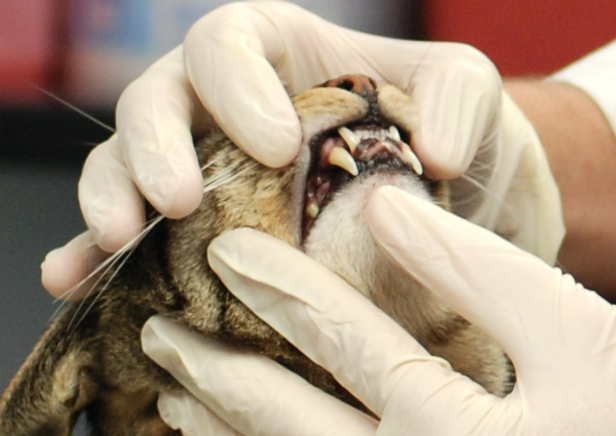Tips And Tools For Home Dental Care For Dogs and Cats
Posted on November 3, 2017 by PGH No comments


NOW that your pet has been examined by your vet and the teeth have been professionally cleaned , what’s next? These tips will help you find the best “tools” and techniques for your pet’s dental needs.
Please note: this article has been provided for informational purposes only. If your pet is showing any signs of illness, please consult a veterinarian as quickly as possible.
1. Start with your veterinarian – a dental exam for your pet
This is the first step for a successful home health program. Your veterinarian will thoroughly examine your pet’s mouth: teeth, gums and oral cavity and make a recommendation if a professional cleaning is necessary. Many pet owners worry about anesthesia for dental cleanings. Be sure to discuss your concerns with your vet and address any issues beforehand.
2. Ask your veterinarian for a tooth care demonstration after the dental cleaning
After a professional cleaning, ask your veterinarian if s/he can demonstrate the proper techniques suited for your particular pet and any special needs your pet may have. Most vets will be happy to oblige and can offer advice on toothpastes and brushes that are suited for your pet’s dental health and temperament.
If your pet is young or not in need of a cleaning, your vet should also be able to review techniques during the initial exam. Starting a home dental program while your pet is young is the best bet for good dental health.
3. Shop for an appropriate toothpaste
Your veterinarian and most pet supply stores will likely carry a selection of toothpaste choices. Do not use human toothpaste! Besides not being tasty for pets, human toothpaste is “sudsy” and is meant to be rinsed out, not swallowed.
Many pet toothpastes are enzymatic, offering greater cleansing action on food debris and plaque and can be swallowed (do not need to be rinsed out). Most pets prefer meat-flavored toothpastes, such as beef and chicken over mint flavors. Start with a small sample first, if possible to find a flavor your pet likes and agrees with.
4. Shop for an appropriate tooth brush or cleaning tool
I say brush or “cleaning tool” because there are alternatives to brushing for pets that cannot tolerate a brush in their mouth. Brushes are familiar to humans, offer a good “reach” and great cleansing action. There are several pet-specific toothbrushes available at your vet’s or pet supply store.
Be sure to select a brush size that is appropriate for your pet’s mouth with soft bristles. If this will not work for your pet, consider a finger-tip “brush”, a tissue or cloth or, as a last resort, a mouth spray (for animals who cannot tolerate anything in their mouth).
5. Introduce your pet to brushing and dental care slowly
The most important things to be aware of when starting a home dental care program is to: 1) not get bitten and 2) not harm your pet’s mouth in the process of brushing. If you are unsure of your pet’s reaction, go slowly. Start with a small amount of toothpaste — let your pet smell and taste it, praising and encouraging your pet.
6. How often should you brush your pet’s teeth?
The best answer is daily, just like humans brush their teeth. Realistically though, once or twice a week is great. Setting up a routine and getting into the habit will help.
7. Bones or chew toys to help keep teeth clean
I do not recommend many of the chewing toys out there such as rawhides. My dogs have chewed them up and eaten them so quickly that I stopped giving them at all, fearing gastrointestinal troubles.
One type of toy that I have found to be useful are the Kong dental toys, as they are durable and not consumable (be sure to choose a toy appropriately sized for your pet).
8. Foods or treats to keep teeth and gums healthy
There are a variety of biscuits on the market labeled as “tartar control”. Tartar Diet (T/D), a prescription Diet by Hill’s pet foods, has proven “scrubbing” effect on tartar and is recommended by many vets. Ask your vet if this is an option for your pet for daily oral care.
As with all treats or special diets, be mindful of the calories and your pet’s overall weight! – vetmedicine.about.com
